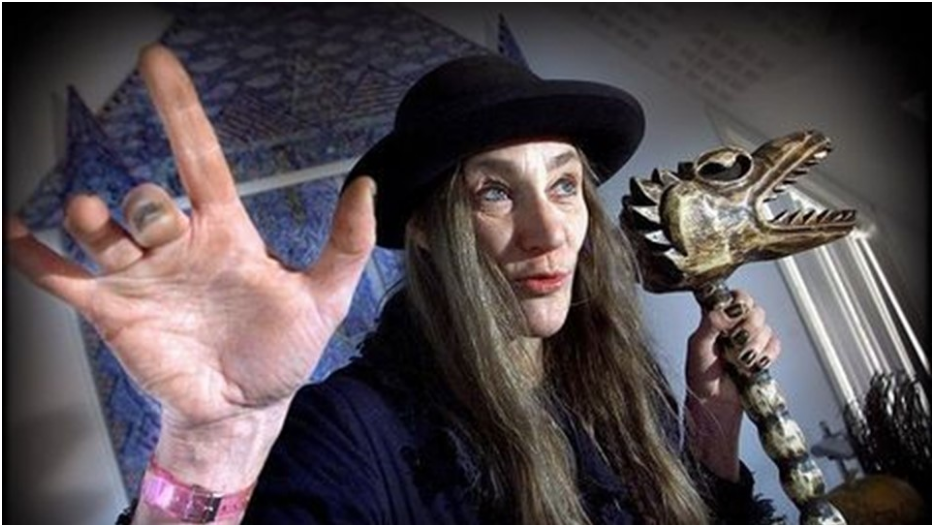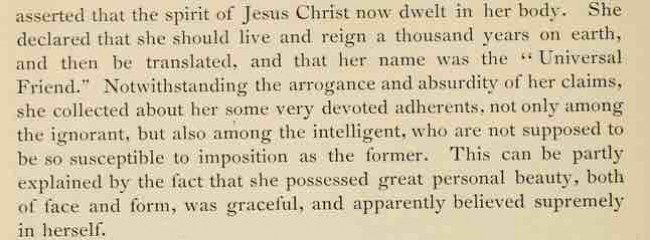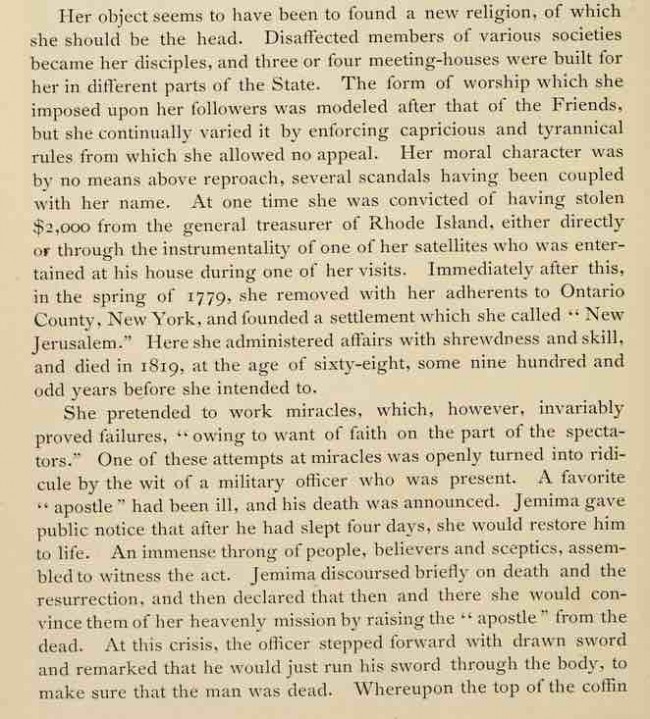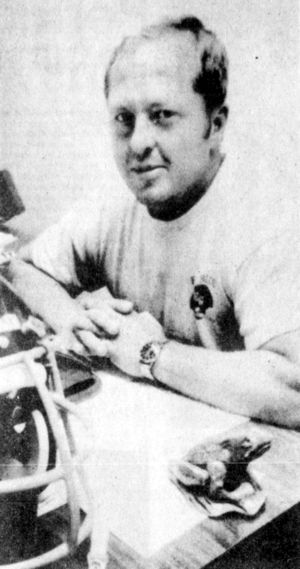Rituals and Superstitions
Concealed Shoes
Hiding a shoe in a building brings mystical results? I think I'm going to try this!From the much more expansive Wikipedia entry on the subject.
Concealed shoes hidden in the fabric of a building have been discovered in many European countries, as well as in other parts of the world, since at least the early modern period. Independent researcher Brian Hoggard has observed that the locations in which these shoes are typically found – in chimneys, under floors, above ceilings, around doors and windows, in the roof – suggest that some may have been concealed as magical charms to protect the occupants of the building against evil influences such as demons, ghosts and witches. Others may have been intended to bestow fertility on a female member of the household, or been an offering to a household deity.
Full article for screenshot below found here.

Posted By: Paul - Fri Jan 24, 2025 -
Comments (0)
Category: Buildings and Other Structures, Rituals and Superstitions, Shoes
Printers’ initiation ritual
Here's a quaint old custom that the digital age has likely done away with.
Des Moines Register - June 13, 1965
Some research reveals that the ritual was known as the "banging out" ceremony. Info from the Optichrome Blog:
Upon the completion of their rigorous training, print apprentices were doused with all sorts of ink and print waste materials by their colleagues, before being paraded through their factories and towns in an outlandish community-building initiation that would never pass today. This bygone tradition dated back to the Fleet Street newspaper factories, when retirees were given the same treatment whilst being serenaded by the sound of banging tools – hence the name of ‘banging out’.
Below is video of a banging out ceremony that occurred in Woking around 1975.
Posted By: Alex - Fri Nov 29, 2024 -
Comments (1)
Category: Customs, Rituals and Superstitions
Vasilisa & The Hungry Doll
Posted By: Paul - Fri Mar 18, 2022 -
Comments (0)
Category: Family, Hobbies and DIY, Movies, Rituals and Superstitions, Supernatural, Occult, Paranormal, Myths and Fairytales, Dolls and Stuffed Animals
The Tennessee Head Banger
Tom Myslinski, who was an offensive lineman for the Tennessee Volunteers, had an unusual pre-game ritual. He would psych himself up by banging his head against doors, cabinets, walls, towel dispensers, etc. Without a helmet.One of his teammates explained that he did this "until his eyes get all bloodshot and, then, blood is pouring from his forehead."
Myslinski noted, "It's just my way to pick up the intensity. To tell you the truth, I have no idea why I do it. Afterwards, sometimes, I say to myself that it sure was stupid because my head hurts."
Myslinski went on to play for nine seasons in the NFL and is now a strength and conditioning coach for the Jacksonville Jaguars.

Kingsport Times - Nov 20, 1991

Arizona Republic - Dec 27, 1991
Posted By: Alex - Mon Feb 07, 2022 -
Comments (2)
Category: Rituals and Superstitions, Sports, 1990s, Brain Damage
Dannie Druehyld, Only Official Witch of Denmark, Has Passed

Some interesting videos, not in English, at the obituary.
Dannie Druehyld knew every single plant and stone in Rold Skov, after calling the forest [her] home for more than 30 years. Now Denmark has lost its only officially registered witch. Dannie Druehyld died on Monday, aged 74. She leaves behind a daughter and a granddaughter.
According to Dannie Druehyld, she was a witch before she was born, and in Rold Skov she has over the years taught children and adults about the forest's magic, folk beliefs and ancient wisdom through her workshop in the Rebild Center. She has also published several books, including "The Witch's Handbook", which tells about witch life all year round.
Posted By: Paul - Wed May 05, 2021 -
Comments (0)
Category: Eccentrics, New Age, Religion, Rituals and Superstitions, Supernatural, Occult, Paranormal, Europe
Jemima Wilkinson Is Lord





The source.
Posted By: Paul - Sat Jan 28, 2017 -
Comments (2)
Category: Delusions, Fantasies and Other Tricks of the Imagination, Eccentrics, Hoaxes and Imposters and Imitators, Religion, Rituals and Superstitions, Scams, Cons, Rip-offs, and General Larceny, Eighteenth Century
Shoes Concealed in Buildings
In the 1950s, the Northampton Museum (home of the "World Famous Shoe Collection) began to receive reports of shoes that had been found hidden in buildings. The shoes, usually discovered by people doing renovations or repairs, were concealed under floors, inside walls, in chimneys, above ceilings, etc.Eventually the Museum received enough of these reports that they realized the concealment of the shoes wasn't an accident, but rather that hiding shoes inside a building was an ancient, deliberate practice. Ever since then, the Museum has kept a record of all concealed shoe finds (the "Concealed Shoe Index"). As of 2012, the index had over 1900 reports of shoe concealment from all over the world (but mostly Europe and North America).

image source: wikipedia
The Museum curators aren't entirely sure why people hide shoes inside buildings, but the leading theory is that it's a form of protection superstition, done to ward off forms of evil such as witches, bad luck, or the plague.
Shoe historian June Swann, former keeper of the Northamton Shoe collection, notes in a 1996 article about concealed shoes that there are all kinds of weird superstitions associated with shoes:
Why the shoe? It is the only garment we wear which retains the shape, the personality, the essence of the wearer.
Just recently, maintenance workers at Cambridge University found a 300-year-old shoe hidden inside a wall.
And earlier this year, a Michigan family discovered 53 pairs of shoes behind a wall in their home — concealed there since the 1970s. Though in that case, it was theorized that the hidden shoes weren't warding off bad luck, but instead were evidence that a previous owner of the home had a shoe fetish.
via TYWKIWDBI
Posted By: Alex - Wed Aug 24, 2016 -
Comments (6)
Category: Rituals and Superstitions, Shoes
Pre-Game Frog Head Biting
1977: Larry Canaday, football coach at Eau Gallie High School in Florida, would inspire his players to victory by biting the head off a live frog. No one at the school was particularly disturbed by this. Parents would even give him frogs before games to help fire up the kids. But when word of the unusual motivational technique began to attract national attention, school officials told Canaday that the "frog-biting must cease."
The Bloomington Pantagraph - Oct 14, 1977

Coach Canaday, with frog statue
Posted By: Alex - Mon May 23, 2016 -
Comments (6)
Category: Rituals and Superstitions, Sports, 1970s
The Mark Of The Beast
.
NewDealDesign, a design house out of San Francisco, is behind an idea for implanted tattoos that carry information about the wearer that could be exchanged by touch. The Bible has long been quoted about the mark of the beast and the Anti Christ being from the Middle East, guess where the CEO of the company is from, just sayin'.
Posted By: Alex - Sat Oct 18, 2014 -
Comments (15)
Category: Armageddon and Apocalypses, Evil, Gods, Religion, Rituals and Superstitions
Herman Slater and the Warlock Shop/Magickal Childe

Starting in 1973, Herman Slater (died 1992) became a mainstay of the New York Wiccan scene.
Here he is explaining his religion. Three more parts of the documentary available on YouTube.
Posted By: Paul - Wed May 08, 2013 -
Comments (9)
Category: Eccentrics, Regionalism, Religion, Rituals and Superstitions, 1970s

| Who We Are |
|---|
| Alex Boese Alex is the creator and curator of the Museum of Hoaxes. He's also the author of various weird, non-fiction, science-themed books such as Elephants on Acid and Psychedelic Apes. Paul Di Filippo Paul has been paid to put weird ideas into fictional form for over thirty years, in his career as a noted science fiction writer. He has recently begun blogging on many curious topics with three fellow writers at The Inferior 4+1. Contact Us |




